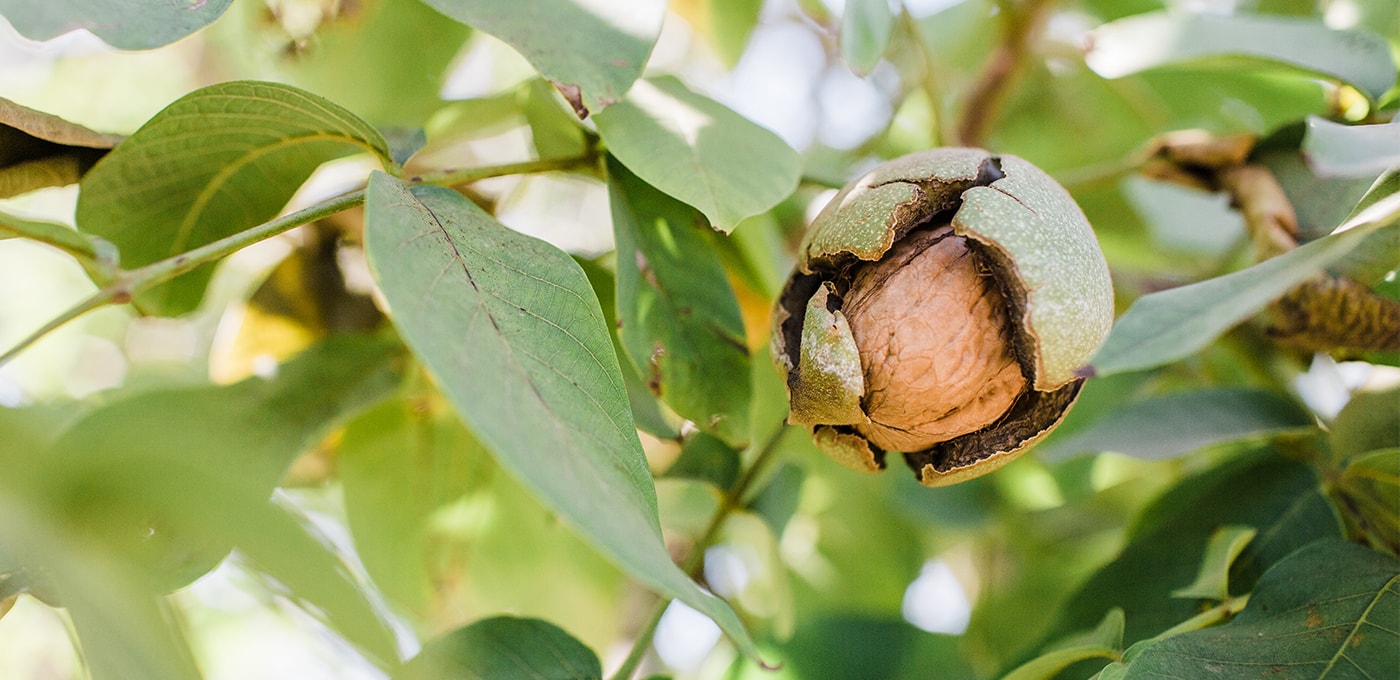Fall and Winter Walnut Management Considerations
Drew Alonso Wolter, UCCE Junior Specialist Horticulture Intern, UC Davis Graduate Student
Katherine Jarvis-Shean, UCCE Orchard Advisor, Sacramento, Solano and Yolo Counties
Emily J. Symmes, UCCE Area IPM Advisor, Sacramento Valley
Walnut harvest season is in full swing. Here are a few things to be mindful of during and after harvest to maintain the best quality and avoid pest/disease issues later in the season.
Harvest
Harvest timing.
Harvesting as early as possible can help reduce quality losses due to navel orangeworm, mold development, and darkening kernel color. At harvest, the objective is to shake what you can pick up the same day as walnut quality declines most rapidly during the first 9 hours after shaking.
Collect harvest samples.
Collecting ground samples at harvest will allow you to distinguish sources of damage in greater detail than is provided on grade sheets. A sampling protocol and damage identification guide is available at: sacvalleyorchards.com/walnuts/insects-mites-walnuts/harvest-damage-evaluation-for-walnuts/.
Post-Harvest
Clean operation.
Once harvest is complete, ensure that hullers, dryers, and areas surrounding orchards are cleared of nuts that may be harboring moth larvae. Sanitize orchards as part of your NOW management program by shaking/hand poling, blowing berms, and then flail mowing mummies prior to next season. Remember that walnut mummies on the orchard floor (middles and tree rows) provide overwintering survival sites for NOW, so even if you have few mummies remaining in the trees, blowing and destroying mummies on the ground helps reduce carry-over NOW populations.
Plant a cover crop.
Annual cover crops are planted in the fall. Target the narrow window after harvesting late varieties and before leaf fall to seed the cover crop. If you’d like to find more info on cover crops visit: sacvalleyorchards.com/blog/walnuts-blog/time-to-think-about-cover-crops-in-walnuts/
Botryosphaeria or Phomopsis.
Prune with BOT infection in mind. If pruning or hedging is planned this year, aim for as early in fall as you can, when the weather is forecast to be dry to avoid infection.
Scout for weeds.
Walking the orchard in the fall provides the ability to evaluate the current year’s weed control program. By scouting the orchard for areas where weed species may have escaped control, you can adjust your management practices to control these weeds in the following year.
Site preparation for walnut replanting.
If you are tearing out an existing orchard and planning to replant walnuts, post-harvest and in October is the time to cut trees and paint stumps with Garlon to kill tree roots. Paint within five minutes of cutting the stump and leave the painted stump for at least 60 days. See more at sacvalleyorchards.com/walnuts/diseases/considerations-for-replanting-walnut-orchards/.

